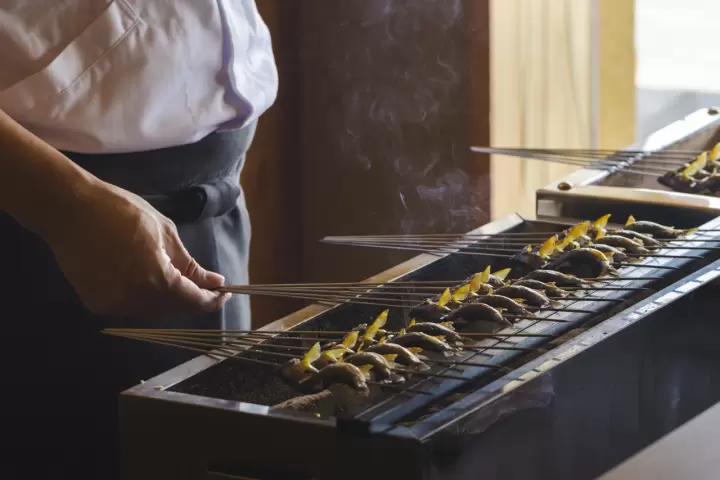Korian, a Japanese restaurant on the northern shore of Lake Biwa, offers refined kaiseki courses centered on fermented sushi and local lake ingredients. Dine here for a culinary experience that deepens your cultural understanding of Japan.
2025.11.21-
Table of Contents
- Lake Biwa: Discover a Unique Culinary Heritage
- Korian: An Auberge Inspired by the Beauty and Bounty of Lake Biwa
- Funazushi: The Origins of Sushi
- A Kaiseki Course at Korian: Rich Flavors from Lake Biwa
- Summary
Lake Biwa: Discover a Unique Culinary Heritage
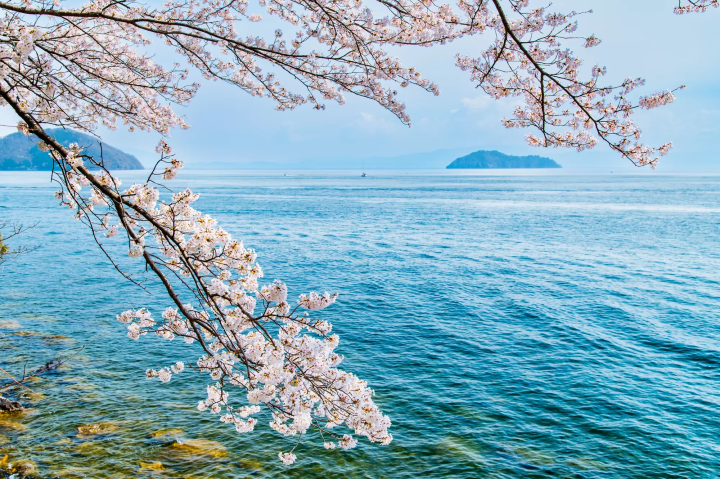
View of Lake Biwa from Kaizu Osaki, a famous cherry blossom spot in Takashima. Photo by Pixta
The unique food culture surrounding Lake Biwa is essential to understanding Japan’s fermented food traditions. This region boasts a rich culinary history where traditional fermentation methods enhance the potential of basic ingredients like rice, fish, and vegetables.
As Japan’s largest and oldest lake, Lake Biwa is home to endemic fish species. Since ancient times, preserving the lake's bounty—especially its fish and nutrients—has been vital for people living nearby, ensuring provisions through winter or disaster. In a time before refrigeration, fermentation offered the necessary solution.
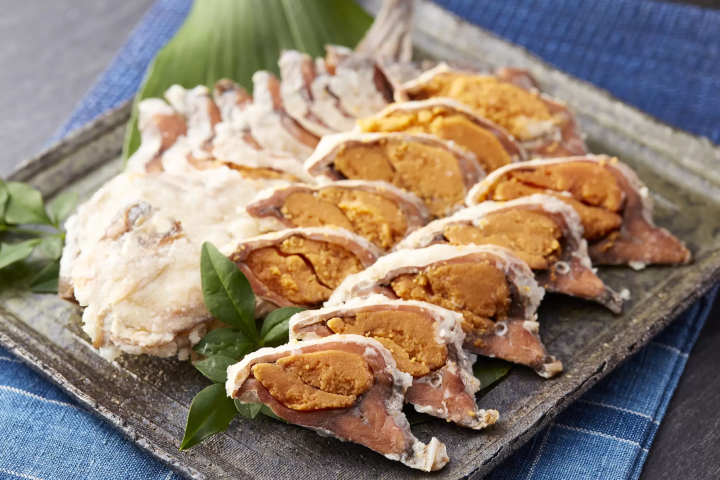
Traditional funazushi. Photo by Pixta
This drive to preserve fish and their nutritional value gave rise to foods like fermented sushi. For example, funazushi, made with Nigoro-buna (a species of crucian carp endemic to Lake Biwa and the rivers surrounding it), is recognized as the oldest form of sushi still in existence.
When visiting the area around Lake Biwa, you can find funazushi at local restaurants, but be aware: with its pungent smell and rough texture, this fermented sushi is an acquired taste.
For a friendlier introduction, we recommend Korian. This restaurant, located in Kaizu, the old port district of Takashima City, incorporates fermented sushi as an ingredient in elegant kaiseki cuisine. This approach makes the dish more palatable for modern diners, offering a feast for all senses that will deepen your understanding of Japan's food culture.
Korian: An Auberge Inspired by the Beauty and Bounty of Lake Biwa
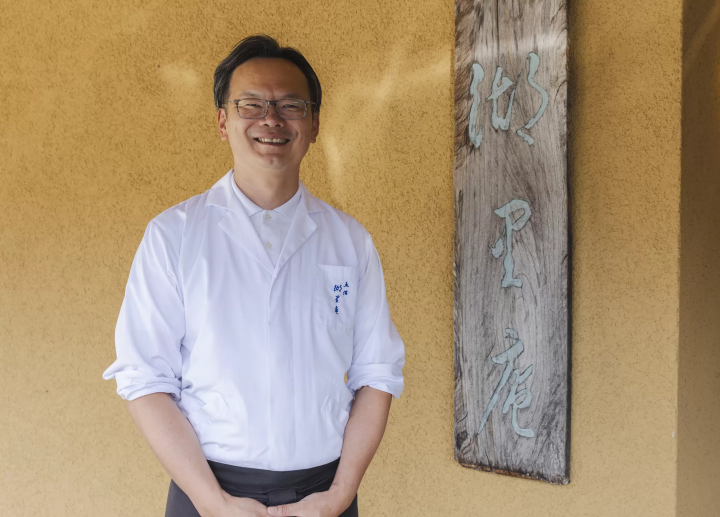
Korian is an auberge operated by the same family as Uoji, a historic funazushi specialty shop. Both are located near the old port of Kaizu, where the remains of dock pillars—now a resting place for herons and wild ducks—preserve the memory of ships that once traversed Lake Biwa.
Kensuke Sazaki, the 7th-generation owner, decided to operate Korian as an auberge (a restaurant where guests can also stay overnight), offering guests the hospitality of a welcoming port while simultaneously acting as a culinary destination where visitors could enjoy funazushi and other flavors born from the lake's bounty.
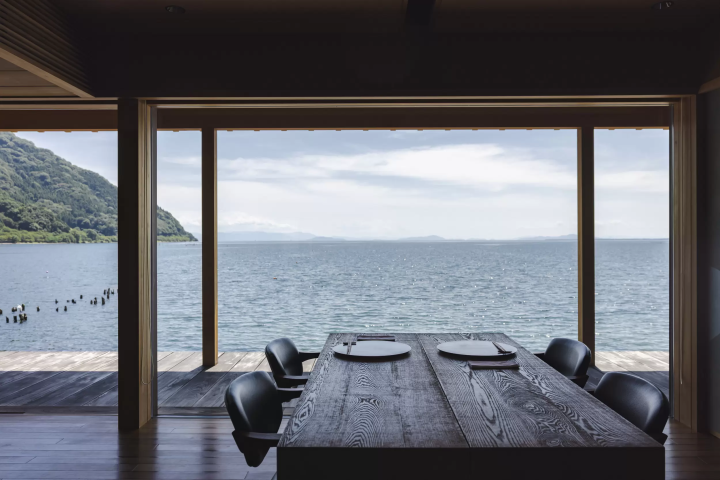
The dining space is remarkable for its simplicity and unobstructed view of Lake Biwa. With ceiling-to-floor windows and an engawa (veranda), it gives the impression that you are dining directly above the water. Every change in the lake's scenery is visible, offering a direct connection to this vast, history-rich ecosystem.
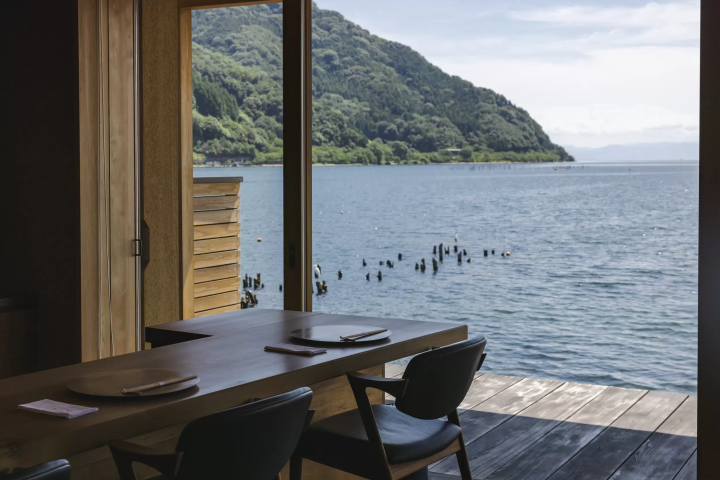
This beautiful space, which directs your attention to the lake's natural beauty, was designed by the owner’s younger brother. Korian reopened in spring 2021 after the building's second floor was destroyed by a typhoon in 2018. With its renewed design and culinary focus, it serves as a gateway to the culture nourished by Lake Biwa.
From the counter seats, guests can watch the owner intently prepare each dish. Seating is deliberately limited so the chef can personally attend to every guest and provide details about the course meal. Therefore, when visiting, it is essential to call in advance to make a reservation or inquire.
Funazushi: The Origins of Sushi
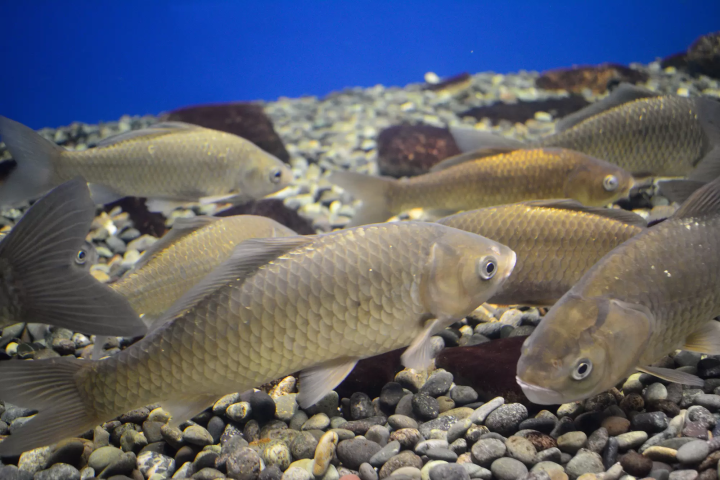
Crucian carp from Lake Biwa. Photo by Pixta
Before we take a closer look at the kaiseki cuisine offered by Korian, let us explain why funazushi is considered the oldest type of sushi.
Funazushi is a type of narezushi (fermented sushi), a food preservation technique that was born around Lake Biwa. The name comes from "funa," the term for the abundant crucian carp found in the lake.
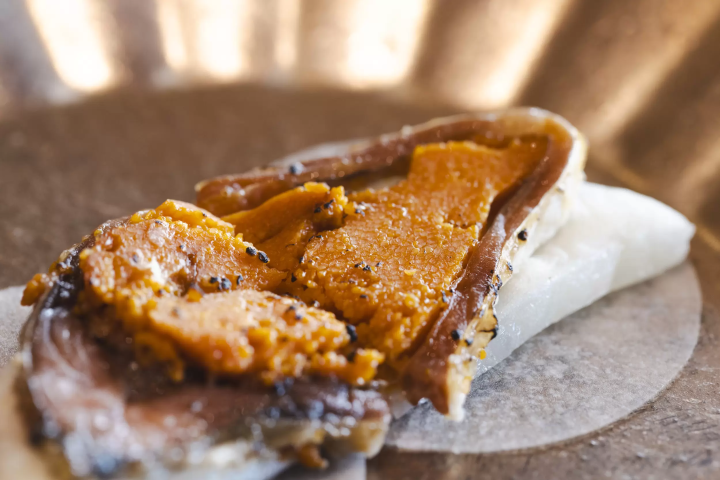
The preparation involves first salting the fish, then fermenting it with cooked rice for a minimum of two years. The fermentation process, which is driven by lactic acid bacteria, creates umami (savory flavor). It also produces a unique, cheese-like texture.
Traditional funazushi, with its pungent smell, can be an initial challenge for some palates.
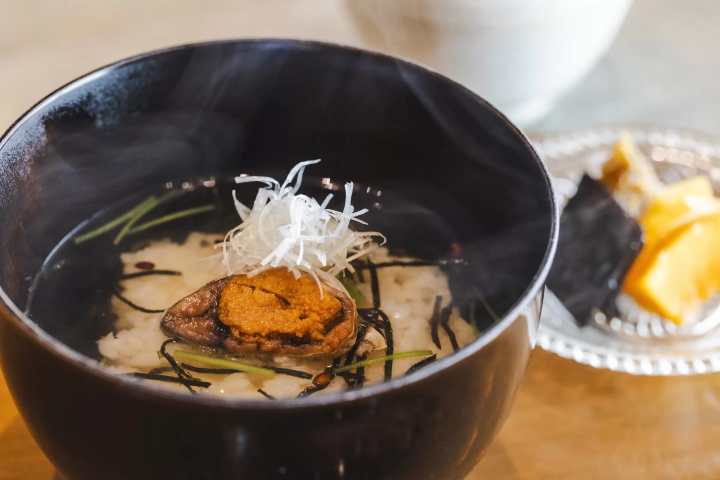
However, Korian's funazushi (fermented sushi) lacks its distinctive strong aroma. Furthermore, they don't serve funazushi on its own; instead, they reinterpret and offer it as an ingredient in various dishes.
This method allows guests to enjoy the diverse flavors that emerge when funazushi is combined with other ingredients.
A Kaiseki Course at Korian: Rich Flavors from Lake Biwa
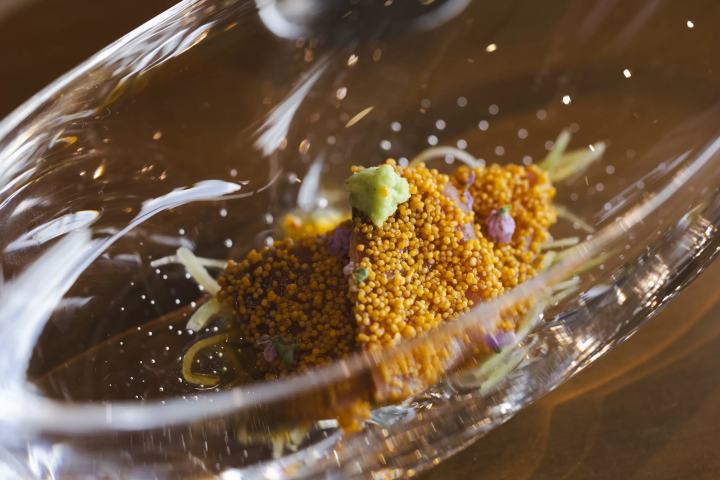
Kaiseki cuisine, recognized by UNESCO, is fundamentally driven by the seasons. Diners are treated to ingredients at their peak freshness, presented beautifully to reflect the colors and themes of the time of year.
Korian follows this seasonal principle, with course contents changing based on availability—you might find wild duck in winter or sweetfish in summer. The one consistent element is funazushi, which remains incorporated into the menu throughout the entire year.
Your dining experience is enhanced by a brief explanation regarding each dish. For instance, the appetizer, funa no kozuke (crucian carp coated with roe), has a rich flavor and a hint of sweetness.
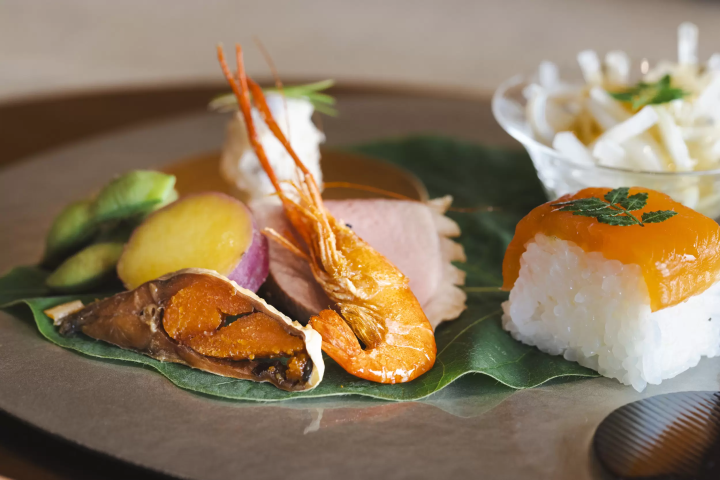
The second dish provides a comparison test: a piece of traditional funazushi is paired with kosode-zushi, a non-fermented sushi made with Biwa trout. Every serving becomes a learning experience, deepening your exploration of Japanese food culture.
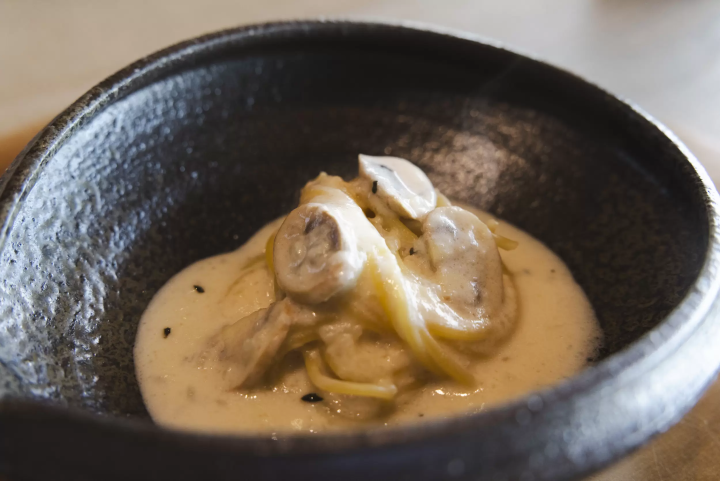
The most surprising dish was a pasta featuring a sauce made with funazushi instead of cheese! The lactic acid bacteria produced during fermentation make the funazushi as rich and smooth as a cream base. This gentle yet deep flavor combines perfectly with the accompanying vegetables.
Guests also enjoy a fragrant soup made from the heads of the crucian carp. After two years of fermentation, the bones are so soft that they release a remarkably deep flavor into the broth.
Additional dishes highlight the versatility of this Lake Biwa delicacy, such as funazushi mochi served on daikon radish, and the concluding bowl of funazushi no ochazuke (rice topped with a funazushi-flavored broth).

The course menu features a variety of other fish and ingredients from Lake Biwa, offering a rounded experience of local flavors. When we visited, the menu highlighted dishes made with small ayu sweetfish and Biwa trout, among others.
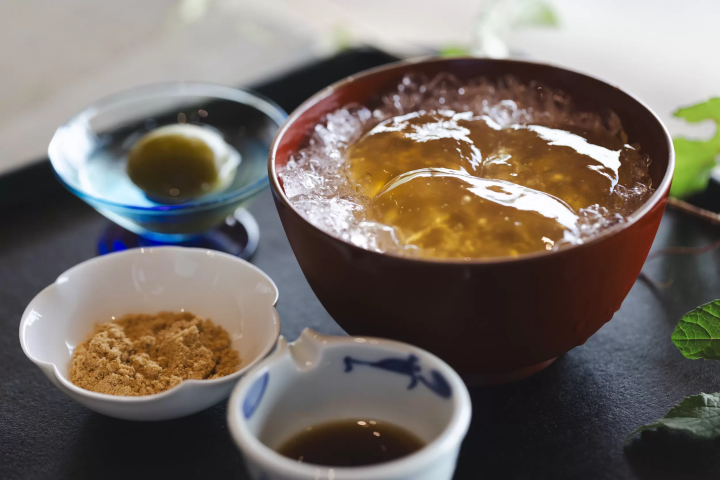
Our meal concluded with dessert: handmade warabi mochi, a traditional, jelly-like delicacy that the chefs prepare right before your eyes.
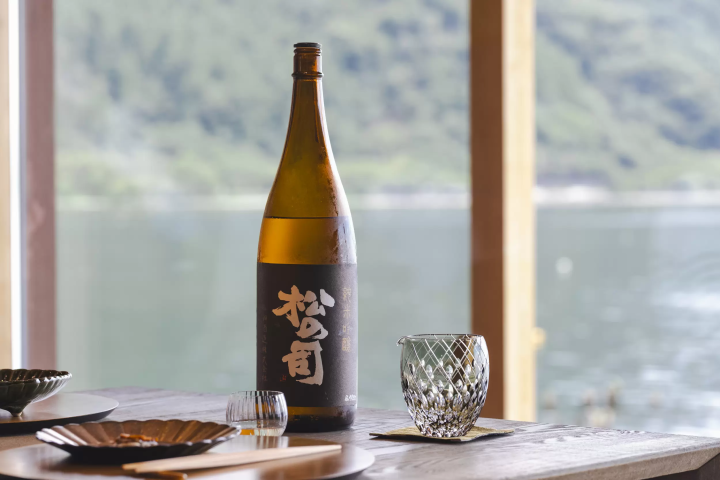
Because kaiseki cuisine and fish dishes pair so well with Japanese sake, guests who enjoy alcohol should ask Mr. and Mrs. Sazaki for recommendations. They offer small servings of sake designed to accompany each dish, which leads to surprising and insightful flavor pairings.
A typical meal at Korian lasts about two hours—a time dedicated to deepening your understanding of Japanese cuisine and local culture. You'll leave satisfied by the exceptional cuisine and newly aware of the deep gratitude locals feel toward Lake Biwa and the unique food culture it makes possible.
Summary
For an experience that provides genuine culinary depth, Korian is a wonderful dining choice on the shores of Lake Biwa.
You can reach the restaurant in about 20 minutes on foot from JR Makino Station in Takashima. If you prefer to drive, Korian fits easily into an itinerary that includes nearby Nagahama, famous for attractions like Kurokabe Square and Umi no Schole, the latter of which is a facility dedicated to the fermented food culture of Shiga Prefecture. Nearby, Kaizu Osaki is a famous cherry blossom destination, offering breathtaking views around early April.
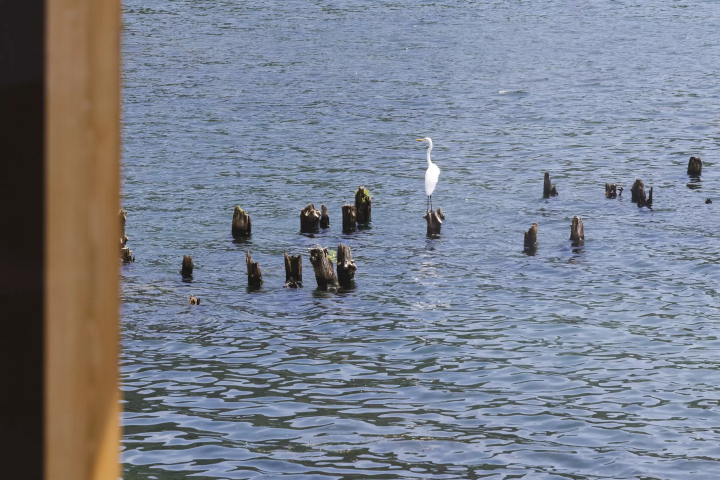
The appearance of Lake Biwa shifts dramatically with the seasons and even throughout the day. Your dining experience at Korian will highlight how full of life its shores are, perhaps enticing you to visit again to witness the lake's beauty in a different season.
The contents on this page may partially contain automatic translation.


